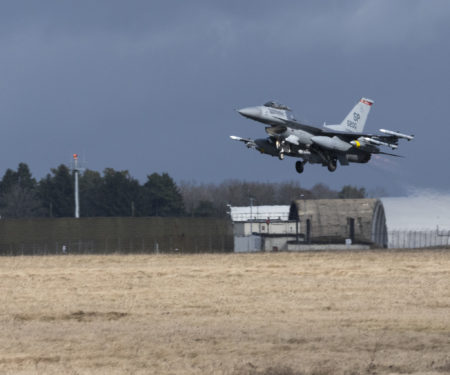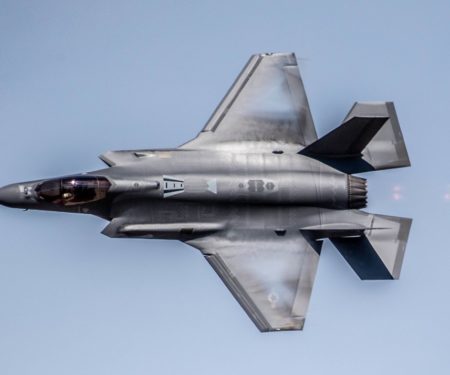Radar Sweep
The Near Future of Military Autonomy Isn’t Robotanks, But ‘Microservices’
Robot tanks and drones swarming the battlefield represent only a small fraction of the ways the military might put autonomy to use in the years ahead. Most troops will likely experience autonomy first as a helping hand in various tasks, from making it easier to drive to collecting intelligence to managing base logistics, autonomy experts from the defense industry and the Pentagon said.
Biden Splitting Frozen Funds for Afghan Relief, 9/11 Victims
President Joe Biden signed an executive order Feb. 11 to create a pathway to split $7 billion in Afghan assets frozen in the U.S. to fund humanitarian relief in Afghanistan and to create a trust fund to compensate Sept. 11 victims. The order calls for U.S. financial institutions to facilitate access to $3.5 billion for Afghan relief and basic needs. The other $3.5 billion would remain in the United States and be used to fund payments from ongoing litigation by U.S. victims of terrorism.
PODCAST: Affordable Mass: Precision Guided Munition Requirements for Great Power Conflict
In episode 63 of the Aerospace Advantage podcast, host John Baum, Maj. Gen. Jason Armagost of Air Force Global Strike Command, and Mark Gunzinger of the Mitchell Institute for Aerospace Studies discuss the types of precision-guided munitions (PGMs) we’ll need for future conflicts. While much of our munitions inventory remains highly effective, it’s also important to recognize that we need to diversify with new systems that are affordable, can survive amidst potent enemy defenses, and are optimized to harness the advantages afforded by fifth-generation aircraft carrying them into harm’s way.
‘I’m Pretty Much Leading a Double Life:' Nonbinary Troops and the Pentagon's Next Frontier
The U.S. military has made strides in recent years to be more inclusive for different genders, gender identities, and sexualities. Nonbinary service is a frontier the military hasn't grappled with yet. That could change soon, as the Pentagon has quietly been researching how it could allow nonbinary troops to serve more openly.
Iraq Seeks French Drones and Jets, Additional Russian Tanks
Iraq’s military is seeking several defense systems of different origins, including French Rafale fighter jets, drones, and artillery, as well as Russian T-90 tanks, with some ongoing negotiations reaching an advanced stage.
In White House’s New Indo-Pacific Strategy, Much Seems Familiar
The Biden administration’s new Indo-Pacific strategy calls for deepening regional security partnerships, closer collaboration with allies on emerging technologies, and expanding American 5G and cyber capabilities across the region, all in order to counter China. If that all sounds familiar, that’s because it is. “Our collective efforts over the next decade will determine whether the PRC [People’s Republic of China] succeeds in transforming the rules and norms that have benefitted the Indo-Pacific and the world,” the strategy states.
DOD and SATCOM Industry to Work Out Details of How to Build ‘Zero Trust’ Networks
The Pentagon, like all federal agencies, has to comply with a new cybersecurity policy—issued last month by the Biden administration—that calls for government networks to use a “zero trust” architecture. The Defense Department’s chief information officer John Sherman said Feb. 10 that transitioning satellite-based networks to this more secure architecture is going to require significant coordination with commercial operators that provide services to DOD.
Air Force Restricts Use of Autopilot on Upgraded KC-135 Tankers Again
A software issue has led the Air Force to prohibit the crews of KC-135 tankers with the Block 45 upgrade package from using the jet’s autopilot at altitudes under 10,000 feet and while refueling other aircraft. The service has also confirmed that this same “logic error” was responsible for a number of potentially dangerous incidents that led to the imposition of similar flight restrictions last year.
NOAA Plans ‘Initial’ Civil Alternative to DOD Space Tracking System by 2024
The National Oceanic and Atmospheric Administration (NOAA) plans to be ready to take over the military’s role of keeping tabs on space traffic and providing warnings of potential crashes by 2025, a senior official responsible for the effort said. “We anticipate with the proposal that we have in place, and working with our sponsors inside the federal government and on the budget side, to have initial operating capacity of an operational civilian space situational awareness capability by 2024,” reaching full operational capability by 2025, said Steve Volz, NOAA’s assistant administrator for satellite and information services.
Air Force Hackathon Puts Real Data on Open Source Code
The Air Force for the first time used open source code and Airmen-designed applications on real weapons system data during a hackathon in January, its head of digital transformation told FedScoop. The Department of Defense has sponsored hackathons before, typically focused on security bugs. But “Bravo 0” was the first secret-classification hackathon with 80 hackers working on a so-called “air gapped” system at Nellis Air Force Base, Nev.
OPINION: The Biggest Threat to US National Security Today Is the US Congress
“A senior defense official recently remarked: ‘The biggest threat to U.S. national security today is the U.S. Congress. While that individual is unnamed for obvious reasons, the sentiment is right on target. The failure to pass a defense appropriations bill for fiscal year 2022 means that the Department of Defense will be restricted in how it operates for the year, and it will also stifle new initiatives to deal with the array of growing threats to the United States,” writes retired Lt. Gen. David A. Deptula, dean of the Mitchell Institute for Aerospace Studies.
Air Force’s Daniel ‘Chappie’ James Jr. Was 1st Black 4-Star General
Numerous Black American service members who broke barriers could be highlighted during Black History Month. This Feb. 11, however, would have been the 101st birthday of Air Force Gen. Daniel “Chappie” James Jr., the first Black man to become a four-star general in any U.S. military branch.




